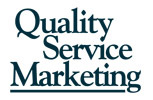This popular post shares a practical and engaging staff meeting agenda. It’s been updated from its original posting in 2009.
=================================================
With e-mail dominating internal communications, staff meetings are becoming a lost art form. Here’s a meeting template that helps engage employees and minimize their passive participation.
I initially developed this template for an advertising & marketing firm that needed to bring together its creatives and administrators (aka “the suits”). With the creative staff at their desks and the account execs meeting with clients or media reps outside the office, casual internal communications was no longer effective for this group of 12 employees.
The following agenda (approximately one hour in length) was used in the agency’s staff meetings held twice a month. This template can be adapted by other organizations to suit their needs.
- What’s going on – agency principals share strategies, policies, and organizational updates with time allowed to address employee questions and concerns.
- Business development updates – account execs, sales and/or administrative staff members discuss:
- New clients and prospects, including which account execs are involved so staff know the key agency contacts if a new client or prospect calls.
- Expanded client opportunities, soliciting employees’ ideas and suggestions on “what else” can be offered to help clients achieve their marketing and sales goals.
- Analysis of lost business to understand what happened with any terminated account.
- Campaigns in progress – creative and media staff members briefly share creative work and, if needed, changes or updates to existing campaigns.
- Lessons Learned – one or two employees voluntarily share a recent work-related experience:
- Favorite Mistakes (things we did that we don’t want to repeat)
- Favorite Catches (good things we did that we hope to do again).
- Wrap up/next steps – summarizing any follow up action items.
Implementing this meeting template resulted in a more informed and cohesive staff that better understood the firm’s business.They also expressed a better appreciation for how their individual and collective efforts contributed to client service and satisfaction.








